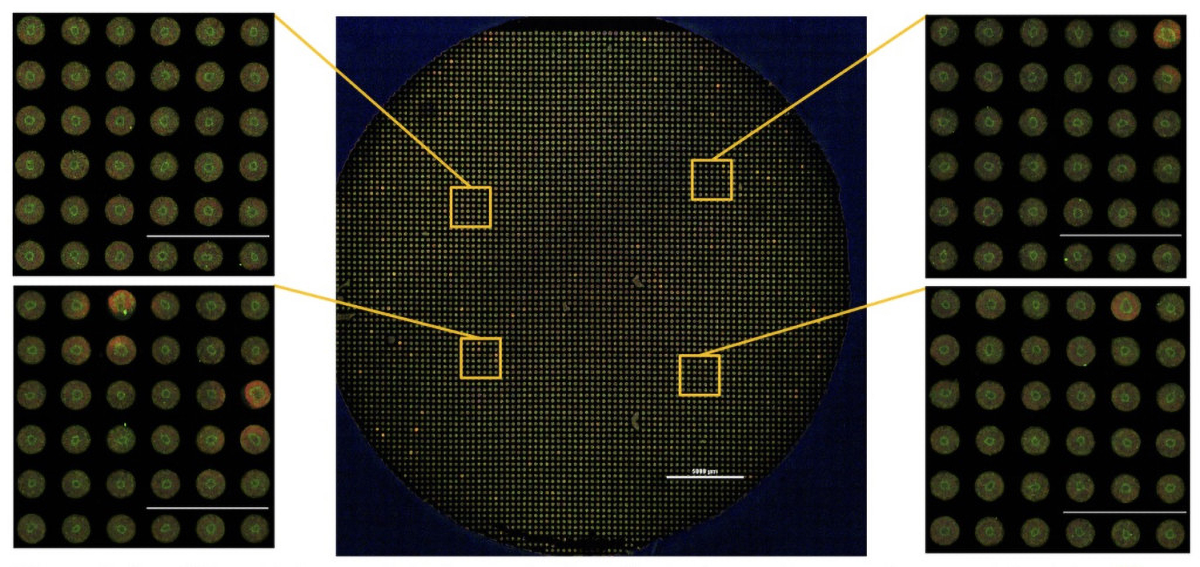
20 Dec Stem cell technology developed at UW–Madison leads to new understanding of autism risks
By Rebekah McBride, UW–Madison
Technology developed at the University of Wisconsin–Madison to grow “rosettes” of brain and spinal tissue gives scientists new ways to study the growing human brain, including a recent study of how genetic mutations linked to autism affect early stages of human brain development.
It’s the latest discovery using RosetteArray technology, a screening tool that uses stem cells to generate embryonic forebrain or spinal cord tissue structures called neural rosettes. Neural rosettes are the starting material for generating human stem cell-derived neural organoids — clusters of cells that resemble larger, more complex organs — and can be used to assess whether different genetic makeups or exposure to chemicals increase the risk of neurodevelopmental disruptions.
“This technology gives us access to an embryonic model of human central nervous system development that we would otherwise not have access to,” says Randolph Ashton, a UW–Madison professor of biomedical engineering and associate director of the Stem Cell and Regenerative Medicine Center. “This is useful, because not only can we now understand more about human development, but we can get an understanding of when it goes wrong.”
Ashton and Gavin Knight, a scientist at the Wisconsin Institute for Discovery who earned his doctorate in Ashton’s lab, developed the technology behind RosetteArrays, which are marketed by Neurosetta, a company they co-founded with support from UW–Madison Discovery to Product and the Wisconsin Alumni Research Foundation’s (WARF) Accelerator Program. Read more …



